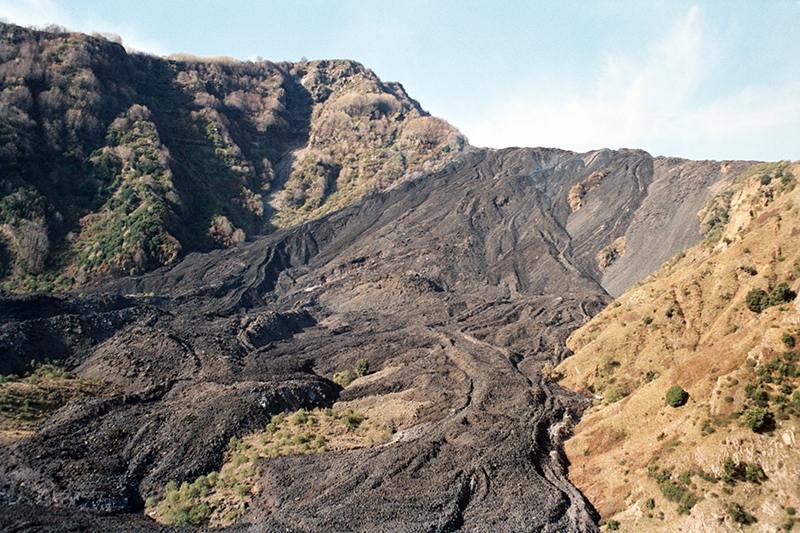The Etna eruption

On the night between December 13 and 14, 1991, an eruptive fissure at the base of Etna's southeast crater opened, which marked the beginning of the longest eruption of the 20th century. The eruption lasted 473 days and produced over 300 million cubic meters of lava. Eventually, the lava flow threatened the town of Zafferana Etnea.
Between early January and May 1992, the Department of Civil Protection, with scientific support from the National Volcanology Group (GNV) of the National Research Council (CNR) and the Major Risks Commission (CGR), carried out a diverse and complex set of interventions to address the erupting volcano. Some of these interventions were unprecedented, such as constructing a 20-meter-high dike to slow the lava flow and implementing additional protective measures.
The action proved effective, and the lava front slowed down for two months. When the basin was full of lava and always overflowing in the direction of Zafferana Etnea, a decision was made to divert the flow into an artificial path using concrete blocks and explosives. The operation was successful, and the last active flow was observed on March 30, 1993.
Photo: Detail of the lava flow of Etna in the early 1990s / Army General Staff